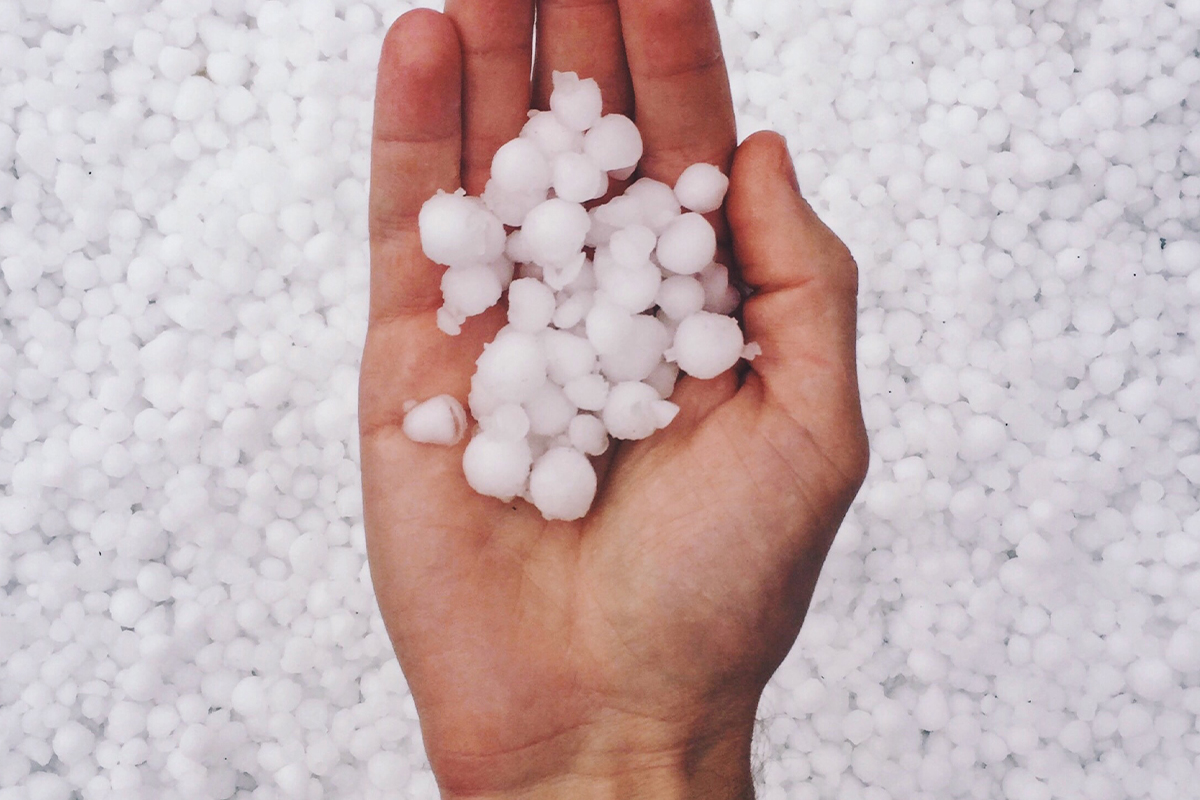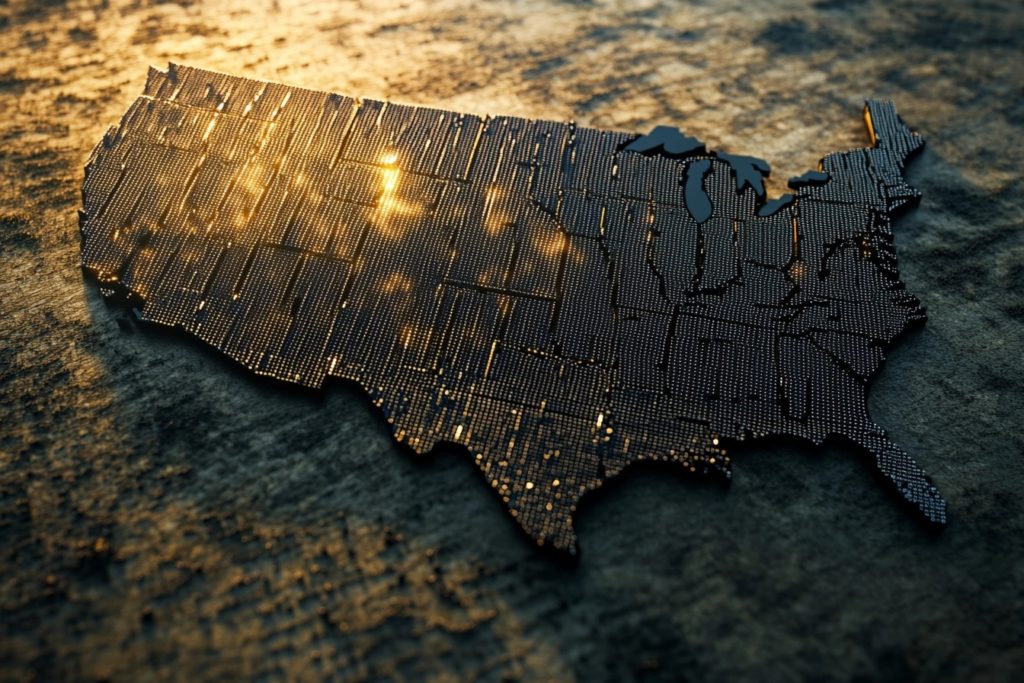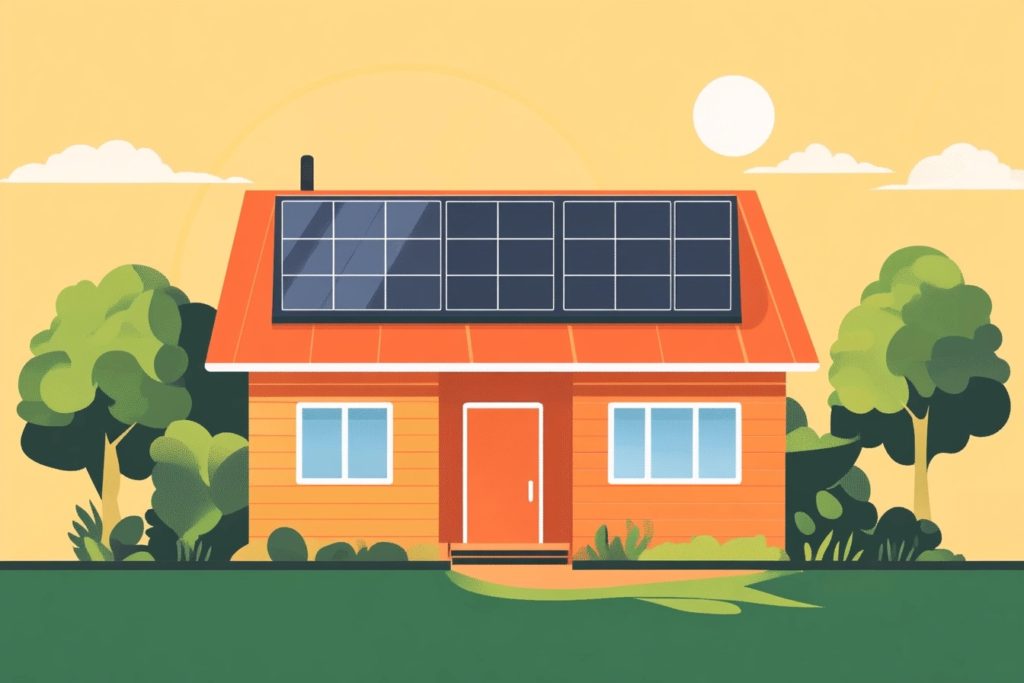
When it comes to investing in home improvement projects, one of the most highly recommended is installing solar panels. Not only do solar panels increase a property’s value, but they also stand to save homeowners substantially on their energy bills. Given the ever-greater cost of utilities and living, the opportunity to reduce home electricity bills is understandably attractive.
It isn’t surprising to hear that more and more homeowners in the United States are switching to solar energy. In fact, it’s estimated that a new solar project was completed every 60 seconds last year. If you are thinking of installing solar panels, you are probably wondering just how durable they are, especially in periods of inclement weather.
In this blog post, we will highlight how you can protect solar panels from hail damage. We will also explore some practical steps you can take to protect, maintain and care for your solar panels so that they last for decades. If you are thinking about installing solar panels on your property, your premier choice is LGCY Power.
What Are Hailstones?
Simply put, hailstones are small lumps of ice. They form in clouds and fall to the earth when they reach a size of at least 5 mm in diameter.
They begin as water droplets in clouds (known as cumulonimbus clouds) that freeze. Cumulonimbus clouds are thunderclouds and hailstones may form within in if the clouds are large enough and the winds are sufficiently strong.
While hailstones can be as little as 5 mm, they can occasionally be far larger in size. The largest ever recorded was a whopping 20 cm in diameter (weighing 0.88 kg), which help in South Dakota in 2010.
Destruction of property and crops because of hailstones results in $1 billion in damage in the United States each year. Since 2000, at least 4 people in the United States have died as a result of hailstones. Given the potential size of hailstones, it is therefore not surprising that they can also inflict damage on solar panels.
How Do Hailstones Damage Solar Panels?
Extreme weather is a major risk for solar panels. Of all the different extreme weather conditions, hailstones are of the utmost concern for homeowners who have or are thinking about installing solar panels.
The good news is that severe hailstorms are not common in the United States. Most solar panels can withstand light-to-moderate impact without experiencing damage. In fact, the chances of hailstones damaging solar panels are very low—less than 5% according to the National Renewable Energy Laboratory.
Still, 5% is not zero, so there is a risk to solar panels from hailstones. Certain states are more prone to hail storms than others, including Nebraska, Colorado, and Texas. Hail storms generally occur between March and October each year.
Hailstones can damage both the external surface of solar panels and also the internal components. This can result in reduced solar panel performance and unexpected costs, such as repairs or replacement.
How to Protect Your Solar Panels From Hail Damage
Next, we will highlight some of the steps that you can take to protect your solar panels from hail damage.
Choose a Durable Solar Panel
Your choice of solar panel is important, particularly if you live in an area that is prone to severe hail storms. We recommend you look for either UL 61730 or IEC 61730 solar panel ratings. These solar panels are resilient to most hail storms and have passed tests showing that they can withstand hailstones up to 3 inches in diameter traveling in at speeds of up to 88.3 mph.
We also recommend that you opt for high-quality panels that are made by a reputable solar panel manufacturer. This way, you can trust that they have used durable materials in their construction and earned performance certification for their products.
Adjustable Installation
When installing solar panels, consider adjustable installation. Because of the angle that solar panels need to face, they are prone to damage from hailstones when they fall from the sky. With adjustable installation, mounted solar panels can be adjusted when necessary.
For example, if you know that a hailstorm is due in your area soon, you will turn a pole-mounted solar panels vertically. This way, the hailstones fall vertically down while not striking the front surface of the solar panels, limiting any potential damage.
Of course, this method may not work in the case of unexpected hail storms, though it’s incredibly helpful on days when you are aware of the potential for such storms.
Automatic Panel Changing System
Rather than having to manually change the angle that your solar panels are facing, you could also consider adding an automatic panel changing system. This will allow you to rotate your solar panels without the need to step outside.
The addition of such a system will naturally increase the upfront cost you will pay when adding solar panels to your property. Still, there is a great convenience factor, as you will change the angle of your solar panels with just the push of a button on a remote control.
Install a Protective Cover
A simpler and more affordable method to protect your solar panels from hailstones is to use a protective cover. Note that not all types of covers will offer hail protection, so look for one that advertises as being able to protect against the impact of hailstones.
A sturdy cover will absorb the impact of hailstones so that your panels are not affected. Depending on the specific type of solar panels you purchase and the manufacturer, there may be a specific cover that you will use. Sometimes, you may also use a blanket or tarp to cover your panels (in instances of smaller hailstones).
Apply a Protective Coating
Another option is to apply a protective coating. Adding a layer of methacrylate forms a durable, hard surface on the surface of the panels that offers additional protection. Think of this option as like adding a screen protector to your smartphone.
Instead of a polymer coating, you could also apply a layer of plexiglass over the glass planning, which will absorb the brunt of any damage from hailstones. Replacing damaging plexiglass is far easier and cheaper than either replacing or repairing solar panels.
Keep in mind that not every climate is suited to this additional layer of plexiglass. If you live in an area with high temperatures, the plexiglass may get so hot that it actually damages the solar cells that are below. Check whether this would be an option first.
Use a Wire Mesh
As we have highlighted above, the greatest risk of damage to solar panels is by larger hailstones. One inexpensive way to reduce the risk of this is to use a wire mesh over the panels.
This means that the largest hailstones won’t be able to go through to the solar panels. Any hailstones that are small enough to fit through the holes in the wire mesh are very unlikely to cause any damage to your panels, so don’t worry.
Bring the Solar Panels Indoors
If you have small, movable solar panels, this may also be an option. Simply set up a dedicated space either in your garage or house where you can store your panels during a hailstorm. Opting for movable solar panels may be a smart option if you live in an area where severe hailstorms are frequent.
Check Your Solar Panels After a Hail Storm
Whatever type of protection you choose, it is also important to visually inspect your solar panels after hailstones or a period of inclement weather. That way, you can spot any signs of damage to your panels. Before the damage is allowed to get worse, you will be able to schedule repairs.
How to Maintain Solar Panels
Next, let’s look at some general ways in which you can maintain your solar panels so that they continue to efficiently generate electricity for many years.
Perform Routine Cleanings
The good news here is that solar panels are durable and require very little maintenance. Solar panels that have been installed on a sloped roof will benefit from falling rain which will wash away any surface debris.
It is a good idea to perform routine cleaning 2 to 4 times per year. It is easy to clean solar panels, all you need is a garden hose or a leaf blower to remove any debris (such as twigs or leaves) that have settled on the panels.
It is especially important that you remove any debris following a period of bad weather. Items such as twigs can cause tiny scratches on the solar panels, which, over time, can become larger. If you spot any damage, it’s a good idea to schedule an inspection from a professional solar company.
Monitor the Health of Your System
We also recommended that you integrate a solar panel monitoring system into your solar system setup. This way, you will track exactly how much energy your solar panels produce over the course of a time and over the course of a longer period.
With this information, you can understand how external factors, such as the weather, affect the performance of your solar panels. A monitoring system will also inform you when a solar panel malfunctions or breaks, allowing you to schedule repairs without delay.
How Long Should Solar Panels Last?
Before we wrap up, let’s look at exactly how long solar panels should last, provided that they have been properly cared for and maintained.
Generally, most solar panels last for 25-plus years and have an average annual degradation rate of around 0.50%. Solar panels won’t just “go bad” one day, rather their efficiency will gradually decline. With proper care and maintenance, good quality solar panels can effectively generate electricity for up to 40 or 50 years.
Within the stated 25-plus year lifespan, certain parts of a solar panel system will require replacing. These include the solar inverter and the solar battery (if your system uses one).
Look at the efficiency of your solar panels in terms of energy production after 25 years and compare this to when they were first installed. If they still produce enough energy for your needs and none of them are broken, there is no need to have them replaced.
Consider replacing them if they produce so little electricity that they do not adequately power your home anymore.
Protect Your Solar Panels From Hail Damage
Solar panels, while durable, are susceptible to damage from hailstones. While hailstorms are not a major concern for homeowners in the United States, the above information will help you protect your solar panels from hailstorms.
If you are interested in learning more about solar power and would like to install solar panels on your property, contact the expert team at LGCY Power. We offer a free solar design and will be happy to answer questions that you may have about the solar installation process.
Click here to contact our team and discover for yourself the benefits of solar energy.




